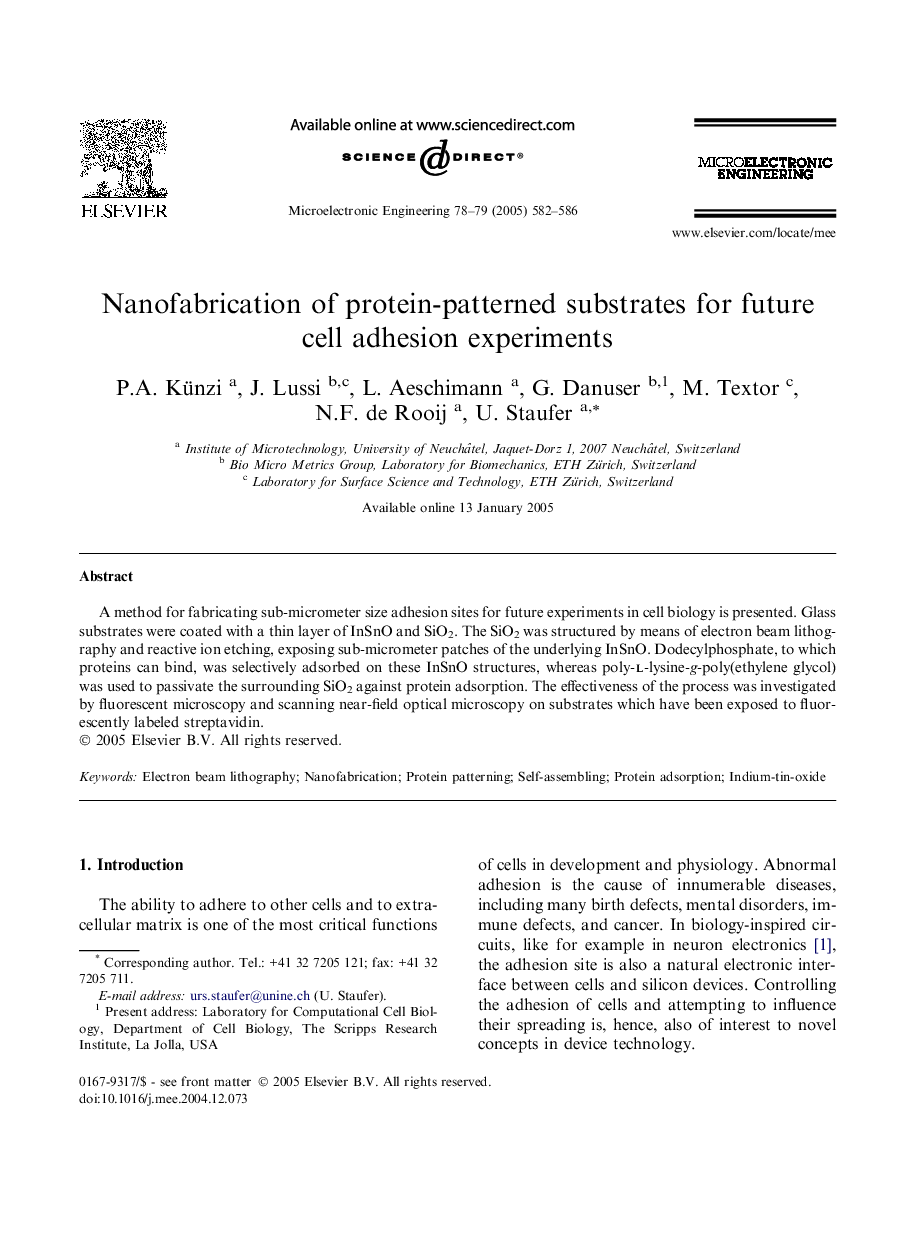| Article ID | Journal | Published Year | Pages | File Type |
|---|---|---|---|---|
| 9670638 | Microelectronic Engineering | 2005 | 5 Pages |
Abstract
A method for fabricating sub-micrometer size adhesion sites for future experiments in cell biology is presented. Glass substrates were coated with a thin layer of InSnO and SiO2. The SiO2 was structured by means of electron beam lithography and reactive ion etching, exposing sub-micrometer patches of the underlying InSnO. Dodecylphosphate, to which proteins can bind, was selectively adsorbed on these InSnO structures, whereas poly-l-lysine-g-poly(ethylene glycol) was used to passivate the surrounding SiO2 against protein adsorption. The effectiveness of the process was investigated by fluorescent microscopy and scanning near-field optical microscopy on substrates which have been exposed to fluorescently labeled streptavidin.
Keywords
Related Topics
Physical Sciences and Engineering
Computer Science
Hardware and Architecture
Authors
P.A. Künzi, J. Lussi, L. Aeschimann, G. Danuser, M. Textor, N.F. de Rooij, U. Staufer,
